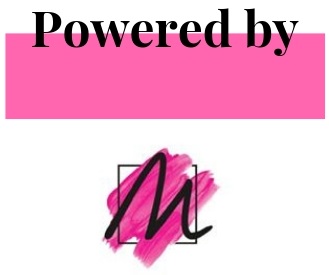For some, fashion is the final frontier of popular culture, and for others, the overly pampered lapdog of the fine arts.
Fact is, too many people perceive the business to be what they see in a shopping mall, or as blazoned on MTV, or as showcased on platforms that announce the latest designer passions.
Few people truly understand the real world of fashion, and its big brother even less – the retail industry.
To put it lightly, the fashion industry is a highly diverse and mesmerising world of creative commerce, and with many career paths, often overlooked by too many students.
“Surely we must blame stigma and ignorance when it comes to perceptions about the fashion industry. At Lisof we have an urgent need to change this misconception, and not necessarily for our own benefit, but purely because we love the industry and we have a commitment to share this passion with others, especially those who would not normally decide on a career in fashion and retail,” says Shana Rosenthal, CEO of Lisof.
The fashion and retail world is vast, fascinating and challenging.
Here are the top 10 career paths you can consider in the fashion and retail industries:
Planner: Merchandise Planning is a systematic approach aimed at maximising return on investment, through planning sales and inventory in order to increase profitability. It does this by maximising sales potential and minimising losses from mark-downs and stock -outs.
It’s all about ensuring what the customer wants is available through research, sales tracking, employee training, buying and maintaining the visual aesthetic of the store.
Buyer: Fashion buyers use their sense of style, knowledge of fashion trends and understanding of their target customers’ desire to create an attractive selection of apparel for retail stores. Retail buyers are the brains behind which products or garments are sourced and stocked in advance of a coming season for retail outlets.
Merchandiser: Fashion merchandisers are on the apparel production side and analyse market trends, production cost, and previous sales numbers to determine the product direction manufacturers will need to take each season.
Visual merchandisers, on the other hand, dress the stores and make it appealing to the consumer. Their function is as important as that of the fashion designers themselves. This is where the creative side of fashion retail shows itself best.
Designer: Here we have one of the highest profile roles in the industry. Designers are the creative geniuses’ who work on the design of clothing and fashion ranges.
Little more needs to be said – designers are the creative backbone of fashion.
Trends Forecaster: The seers in the fashion industry are as important as the designers. They predict upcoming trends, and reignite trends that are on the decline. Silhouette, shoe shape, textile choice, colour schemes, skirt lengths and jewelry are all within the scope of a forecaster’s vision.
To be a fashion forecaster you must understand the world of a consumer – this is one of the most challenging tasks in the fashion industry.
Pattern Engineer: They create the blueprint or pattern pieces for a particular apparel design. This often involves grading, or adjusting the pieces for different sized garments. Pattern Makers convert a clothing designer’s original model of a garment into a pattern of separate parts that can be laid out on a length of fabric.
After discussing the item with the designer, these skilled workers usually use a computer to outline the parts and draw in detail to indicate the positions of pleats, buttonholes, and other features Patternmakers then alter the size of the pieces in the pattern to produce garments of various sizes, and they may mark the fabric to show the best layout of pattern pieces to minimize waste of material.
Production manager: Churning out fashion collections twice a year is no easy job for even the most seasoned fashion designer, and without a loyal support staff, it may be close to impossible.
Chief among employees attached to a fashion house is the fashion production manager, a pivotal job that calls for a person with a passion for detail and an organized mind. Production managers are the sun around which a designer’s logistical efforts revolve – so if you enjoy multi-tasking and responsibility, this could be the career of your dreams.
Stylist: Fashion stylists are responsible for bringing to life a photographer or director’s vision for a fashion photo shoot, layout, commercial, print advertisement or music video.
Fashion stylists often scout out locations, create the mood for the shoot by selecting and setting up the appropriate props, fashion, accessories and even models to fit the theme of the shoot.
Theirs is a very creative role – fashion stylists will work with many media organisations, including editorial print, advertising, film and online.
Brand Manager: Here we have the main cog around which fashion and retail evolves – the brains behind the consumer’s envy and appreciation of design; the machine that follows the heart and soul of fashion as perceived through consumer eyes.
His/her job is to rev up fashion sales and he can only do that by having a fantastic knowledge of fashion and marketing techniques such as brand equity and consumer buying habits. His/her mission is to create the vision, positioning, segmentation and marketing strategy for company and client.
Fashion Media: This the world of fashion writers and photographers, of fashion public relations specialists, publicists, journalists and bloggers, who help apparel companies and retail stores build and maintain a favourable public image.
And these are just a few current careers in the world of fashion. Prospective students, allow yourselves to get to know the myriad of career and job opportunities available in the fashion and retail industries and grow with it.
Currently, Lisof is one of the few fashion colleges that combine commerce and style as a tutoring base. This gives students that leading edge in a highly competitive international fashion market.





